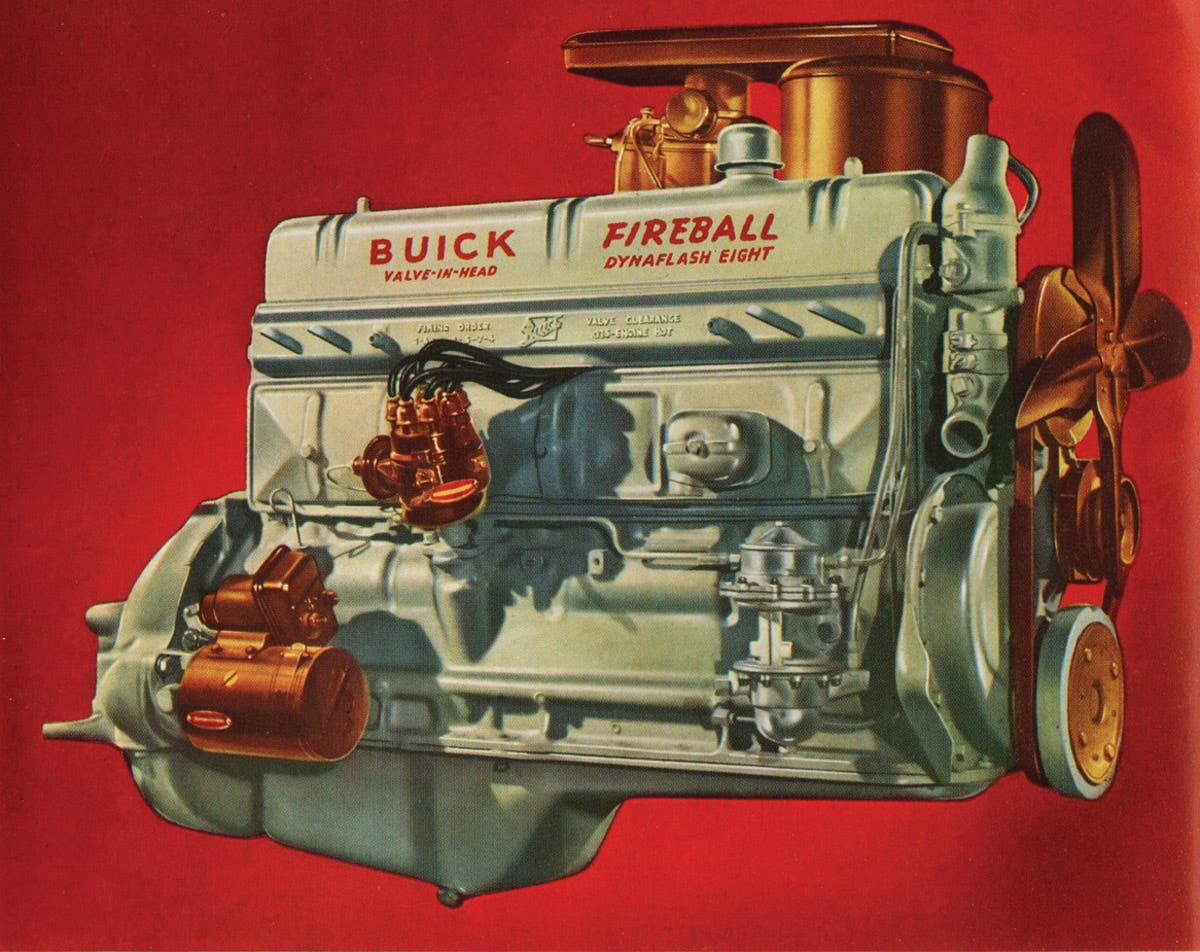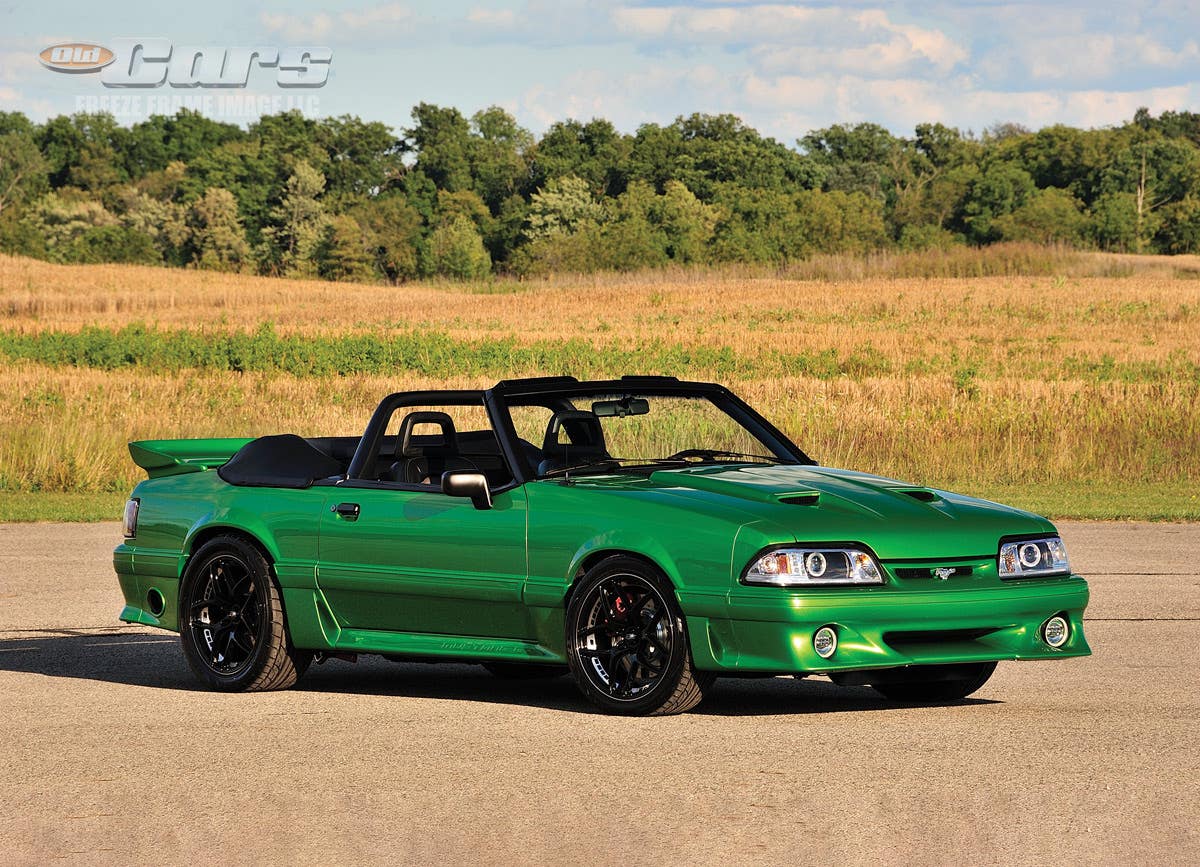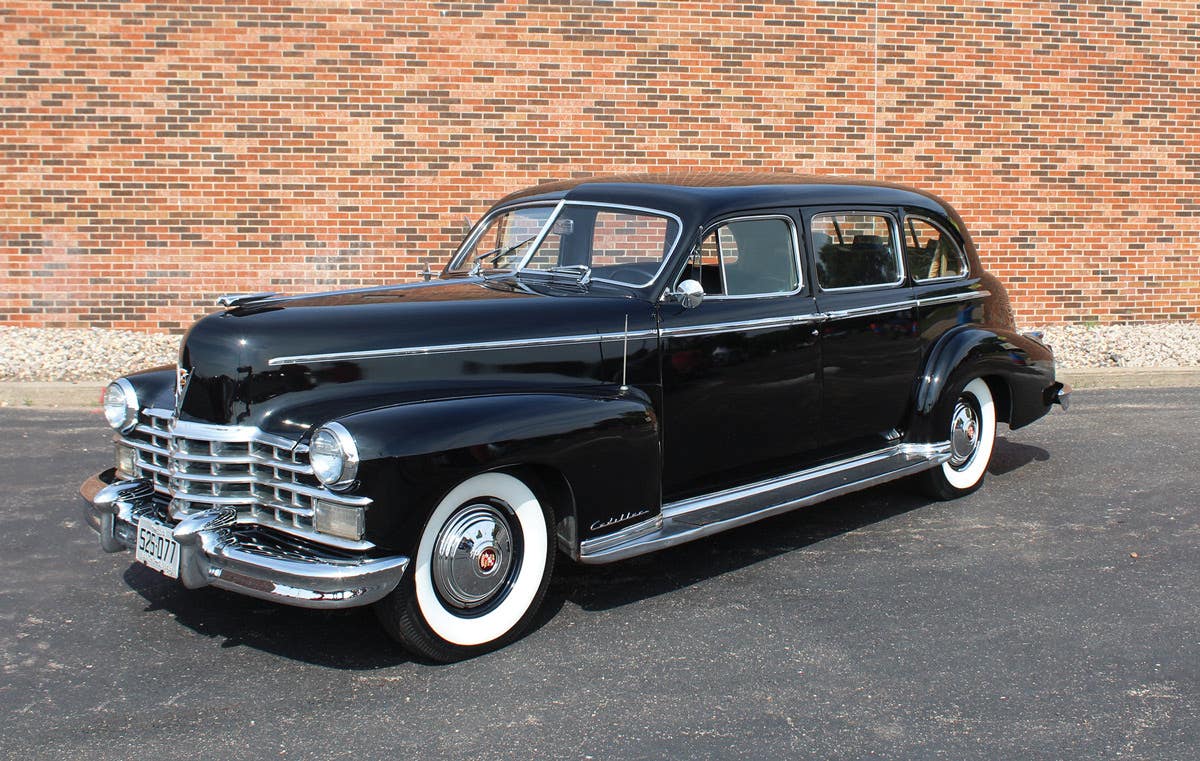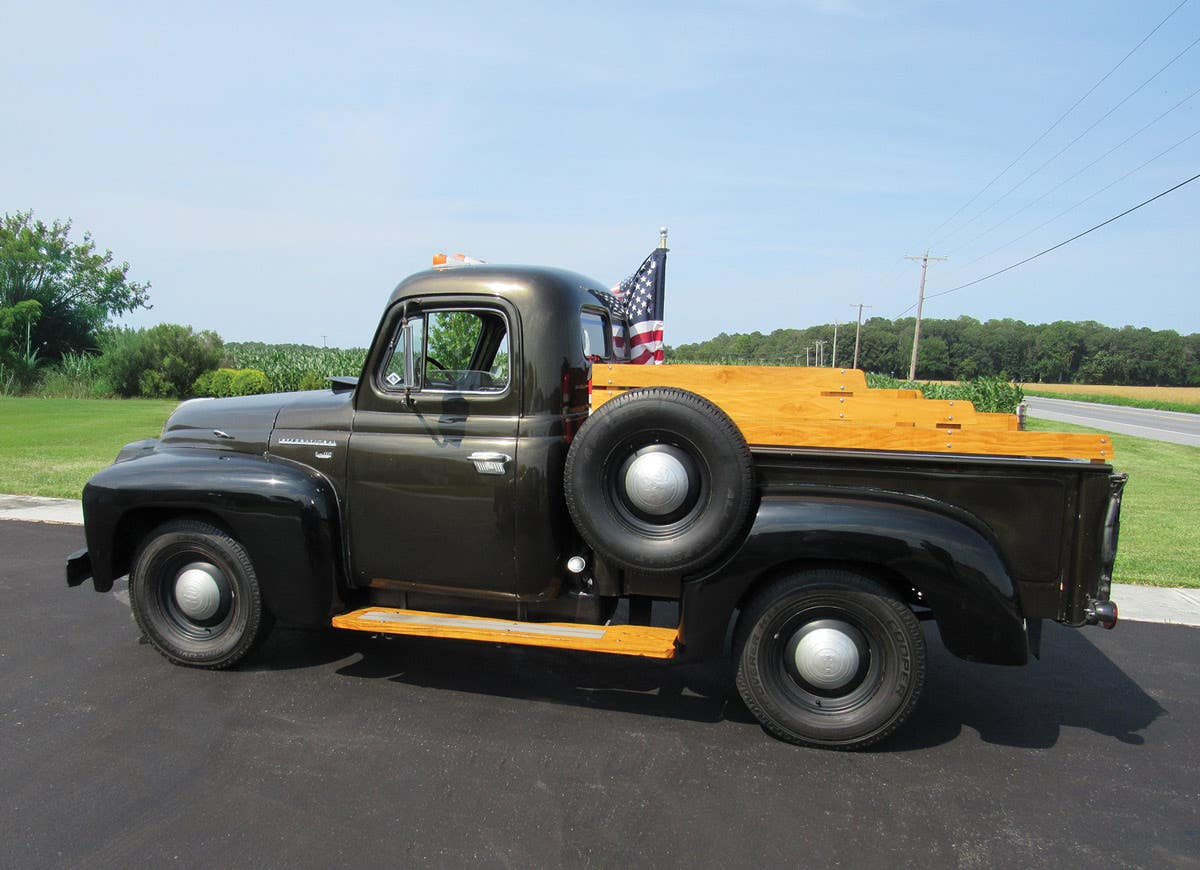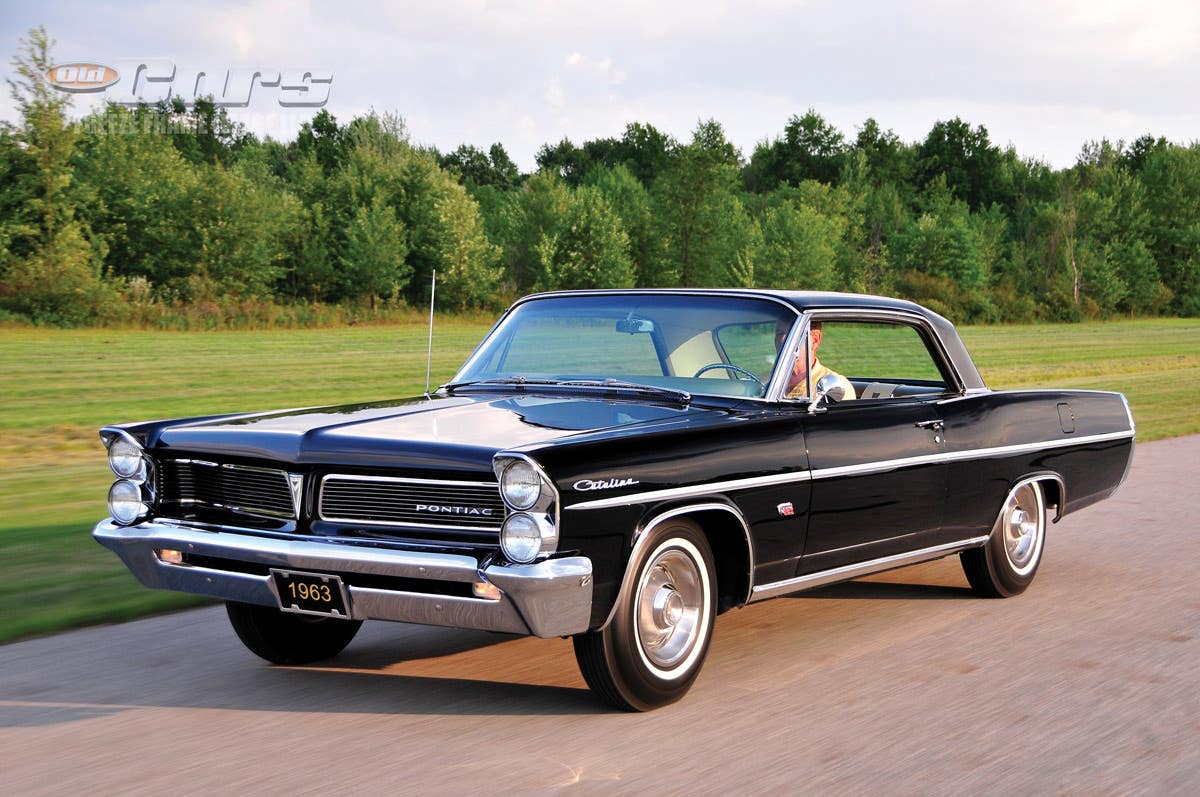A Star is Reborn
In the miles of credits following at least 14 Hollywood films, there’s one supporting role you won’t find mentioned. Yet to any car hobbyist, this overlooked star stole the show.
In the miles of credits following at least 14 Hollywood films, there’s one supporting role you won’t find mentioned. Yet to any car hobbyist, this overlooked star stole the show.
Cast in the shadow of such silver screen legends as Marilyn Monroe and Tony Curtis in “Some Like it Hot” and Bette Davis and Glenn Ford in “Pocketful of Miracles,” the Duesenberg Judkins seven-passenger limousine that appeared in these films was left to drift into obscurity by Hollywood filmmakers. It was almost allowed to drift off the face of earth, had it not been for the efforts of car collector George Albright, who brought the Judkins limousine back from pieces to a whole car in 2008. But to get this washed-up “has been” back to center stage took a lot of twists and turns – and parts hunting.
Although this car was once used by E.L. Cord’s wife and starred in several movies, the body, which was separated from its chassis in 1985, almost never made it back to the road. Thanks to the efforts of George Albright and several restorers, it’s a whole, road-worthy, new-looking car again.
“I feel like Indiana Jones,” said Albright of his search for parts. Beginning only with a nice, original style 1091 Judkins limousine body, hood and rear fenders, Albright’s search for original Duesenberg components to complete the car shares many traits with the movie character that searched the globe for historical artifacts.
Making a star
The Judkins body Albright started with might have been a star even before it made its splash on the silver screen. In 1930, Duesenberg included an identical Judkins seven-passenger on its stand at the New York Auto Salon in Buffalo that may or may not have been Albright’s car. Randy Ema, present owner of Duesenberg and restorer and historian of the marque, does know the original owner of Albright’s car was William Sandow. In 1935, Ema’s records indicate this Judkins sedan became the chariot of Mrs. E.L. Cord, wife to the famous president of the Cord Corp., which owned Duesenberg.
The Cords used the long-wheelbase Duesenberg Judkins seven-passenger sedan until 1937. Following their ownership, the low-mileage car’s film career began when it was inducted into the Pacific Auto Rental fleet to be leased to production companies for use in films.
All 10 of the Judkins style 1091 sedans were built on the long, 153-1/2-inch wheelbase Model J chassis, a fact exemplified by this factory photo. Can anyone identify the location in which this unknown Judkins was photographed? (Randy Ema
collection)
At least one photograph from Pacific Auto Rental touts the Judkins sedan as a “gangster era” car, and the rental company reeled in at least two filmmakers who used the car for their mobster-era productions. Perhaps the car’s most cringe-worthy scene appears in “Some Like it Hot,” starring Monroe, Jack Lemmon, Tony Curtis and original Duesenberg Tourster owner Joe E. Brown. In this 1959 film, the low-mileage Duesenberg Judkins sedan squeals into a parking garage, breaking through a chain before unloading a car full of outlaws led by Spats Colombo, played by George Raft. After the outlaws spray the competing mobsters with bullets, the car quickly pulls out of the garage with the remains of the chain and its attached “sound your horn” for entry sign still clinging to the bottom of the car. In this scene, the mighty roar of the car’s 420-cid straight-eight sings through the viewer’s surround-sound system as the driver takes advantage of the 265-hp engine’s low-end torque.
A more polite use of the car can be seen in “Pocketful of Miracles,” a 1961 gangster film starring Bette Davis, Ann-Margret and Glenn Ford. The Duesenberg’s role is much smaller in this film, as it serves only as a backdrop for a brief scene in which the character playing a Spanish consul exits the car at a New York City pier.
The Judkins sedan while it was in use by Pacific Auto Rental. At the time of the photo, the car had very low miles and was in largely original condition. Notice the rental company marketed the car to gangster movie-producing filmmakers.
Despite its use in these films and others, the Duesenberg’s mileage remained low and its condition was exceptionally original when it was offered by Rick Cole Auctions as part of the no-reserve liquidation sale of Pacific Auto Rental’s fleet on Aug. 18, 1985. Along with Duesenberg J-395, a Murphy convertible coupe, the Judkins sedan headlined the sale and fetched $180,000, according to Old Cars Weekly auction records.
A falling star
Even though it was not acceptable to remove closed coachwork from Classic car chassis to mount more sporting open coachwork, such as phaeton or speedster bodies, some people were still attracted to the prospect. In the 1980s and earlier, such a change could enhance a car’s value, though many collectors looked upon such a change as altering history. The Judkins featured here was a victim of this trend.
Fred Weber of St. Louis and his son Dave purchased the Judkins sedan from Pacific Auto Rental’s liquidation sale and soon sent it to master restorer Fran Roxas of Chicago. Weber’s instructions to Roxas were to remove the Judkins sedan body from its low-mileage Model J chassis and replace it with one of the racy torpedo phaeton bodies Roxas was masterfully re-crafting from his shop.
Roxas complied, resulting in the pairing of a beautiful black torpedo phaeton body atop the Judkins’ original chassis, 2276, and with its original engine, J-255.
“They wanted to have a car that had a body that could be switched,” Roxas said. “It was going to be a car that could be open or closed, but that never happened.”
Weber eventually sold the car, and it was displayed with the torpedo phaeton body in the impressive Auto Collections at the Imperial Palace before traveling to England, where it now resides with a collector.
The fate of the Judkins body was not as fortunate. Rather than accompany its original chassis and engine, the Judkins body passed among collectors. Since the body was no longer mounted to a chassis, it remained in storage from 1985-2005. During that time, many collectors contemplated what to do with the body, and at one point, it nearly became an enthusiasts’ bar or bed!
Judkins frequently used these loop-type door handles on the bodies it built, and these handles, along with much of the other hardware, are original to the car and have not been restored.
Before that could happen, George Albright stepped in. In 2005, the pre-1905 automotive history student came upon a speedster body at auction that had been built for a Duesenberg chassis in 1946. Albright won the auction and started him down a path to put the speedster body back on the road. Before traveling far, the path made a turn down a new road to the Judkins seven-passenger body and many other original Duesenberg parts.
“I decided to look for a reproduction frame to put under [the speedster body], and it took me back to Russell Yordy, who I had known for 15 years,” Albright said. “Russell said, ‘I’ve done a bunch of Duesenbergs, and I don’t want to do another one. Rather than you do this second-generation [speedster] body with a reproduction frame, well, I have this beautiful Judkins limo body, and it needs to be put on this restored rolling chassis I have.’ ”
Judkins frequently used these loop-type door handles on the bodies it built, and these handles, along with much of the other hardware, are original to the car and have not been restored.
That Judkins sedan body, style no. 1091, was the last remaining example, and one of the most famous Duesenbergs of all – the car from “Some Like it Hot” and “Pocketful of Miracles” and one of several Duesenbergs used by E.L. Cord. Albright quickly changed his plans of restoring the speedster body in favor of returning the Judkins seven-passenger sedan body to the road.
The hunt
In Duesenberg circles, cars that retain an original engine, chassis, coachwork, aluminum firewall and instrument panel are held in very high esteem, since these components have been reproduced. Given the history of the Judkins sedan body, Albright wanted justice to be served to the remaining coachwork and searched for these original parts. He made the search for a frame, the foundation of any car, his starting point.
“I said, ‘If I am going to go through all of the trouble of having an original body and engine, I want an original frame,’ ” Albright said. But there was a large problem in that plan. “I talked to Yordy and Randy Ema and Brian Joseph, and all of them said an original frame has not been available for many years.”
The division between the rear seats and driver compartment retains the original inlaid wood, along with the lap robe bar. The handle in the center raises and lowers the division window.
Dumb luck didn’t wait long to strike, and one month after purchasing the Judkins body, Albright saw a Kruse International advertisement featuring the sale of the Karl Klieve estate.
“That was August 2005, and Karl was a Ph.D. engineer that had this interesting habit of buying Classic cars and taking them apart and letting the parts lie around,” Albright said. Among those Classic car parts were two original Duesenberg engines and a pair of long-wheelbase Duesenberg frames – just what Albright needed. “I went to the Klieve auction and bought both of the original frames and the two engines [including] J-102 and its original frame, no. 2128.”
Although many of Klieve’s parts were left outside, the frames Albright purchased from the estate were in excellent condition. The long-wheelbase frame that made up chassis no. 2128 was a particularly good match to Albright’s original-paint Judkins sedan body, which was also built for the long wheelbase.
“He had hung it from the ceiling rafter in chains, and it was in its original paint,” Albright said. “You could see that frame was made by the Parish Frame Co. – you could still see where it said ‘Parish.’ ”
Many of the main components required to restore the Judkins limousine with original parts were quickly stacking in Albright’s garage, but there are a lot of parts to a car, and Albright had a ways to go.
“I had two original frames, two motors [plus] beautifully restored running gear on a reproduction frame,” Albright said. “Then I had the beautiful original-paint Judkins limousine body. I had all this, and one thing led to another and someone introduced me to Dee Howard.
“Dee Howard had the largest stash of Duesenberg parts on the planet. He was 85 years old and the family decided it was time for him to get rid of his car collection. Dee and I made a deal in 2005 to buy four more engines including [engine] J-183, which had a fully restored original [short-wheelbase] chassis under it. So now here I am sitting with seven engines and three original chassis, plus I bought all of Dee Howard’s [other] stuff.”
As is typical for limousine-style sedans, the front interior features leather upholstery. Although the paint on the Judkins body was original when Albright purchased it, the interior and top had been redone by the previous owner.
The additional “stuff” included a semi trailer full of parts, the jackpot to nearly completing the Judkins limousine’s restoration.
“Dee Howard literally sold me a semi trailer full of Duesenberg parts,” Albright said. “It filled my 30-foot by 40-foot garage, and we were finally in a position to put [the Judkins sedan] back together.”
Among the few parts Albright still needed was an original instrument panel and an external windshield visor made of green glass as used on Judkins bodies. Albright’s luck hadn’t been exhausted while searching for an original frame, and he was able to find the also hard-to-find instrument panel and visor by networking.
“That dashboard is from one of the lost Duesenbergs out of France,” Albright said. “A man in France saw this Duesenberg in a junk yard in the 1950s and 1960s … on the France/Spain border, and he got the dashboard out of it when it was dismantled.” Albright was able to buy the instrument panel, complete with gauges, from a friend of the man who rescued the part.
Thanks to the car’s use in films and TV featuring well-known Hollywood figures, this car’s interior is the red carpet. The rear compartment features cloth and jump seats.
More challenging was finding the visor for the Judkins body. Even though the body remained intact and very original down to the rear fenders, the visor was lost somewhere in the car’s well-traveled past.
“Those visors were used on Judkins and V-16 Cadillacs, and I was introduced to a guy at Hershey who had three,” Albright said. “He was told it came from a Duesenberg, and it bolted right on!”
A career comes full circle
With a garage full of pieces, Albright was ready to search for someone who could re-assemble the puzzle. The answer turned out to be simple — Albright went right to the puzzle maker, Fran Roxas, who disassembled the Duesenberg Judkins sedan in the first place.
“If you read Old Cars Weekly like I have for 30 years, you’ve seen his name and creations,” Albright said of Roxas. “He’s very hard to find … he’s not listed and he doesn’t advertise. If you go looking under Roxas, you can’t find him. I called somebody that introduced us.
“He knew the car and where the pieces went back together,” Albright said. “So, I sent the original body and frame and the restored running gear to Fran, and he fully restored the original frame [no . 2128] and moved the engine over and put the original body on it.”
“[Albright] had a running short-wheelbase chassis and he wanted to put this [long-wheelbase] car back together, so we switched everything from his short wheelbase to this [long-wheelbase] frame, which I believe is the second chassis manufactured,” Roxas said.
While completing the switch, Roxas restored the chassis, which included spraying new paint. When Roxas mated the freshly painted chassis and fenders to the original-paint body, the two clashed and the original paint no longer looked appropriate. When Roxas noted the clash, he called Albright, who was forced to make a decision.
“Unfortunately, the original body was not nice enough to leave the original paint,” Albright said. “We used the exact color scheme, down to the apple green pinstriping, which was from the factory.”
Added Roxas, “We went through a lot of trouble to match the original colors, because the body still had the original paint and pinstripe on it. It made our restoration, as far as colors, easier, because we didn’t have to do too much research.”
When Auburn, Cord and Duesenberg automobiles carry original bodies, chassis and engines, they are considered category one cars by the Auburn Cord Duesenberg Club. It was always Albright’s intention to restore the Judkins body with as many original parts as possible for historic preservation, rather than judging purposes, but he ended up with a car that can stand proud among other vehicles in the ACD Club.
“It’s probably the first category one car to be reassembled in 20 years or so,” Albright said of the Judkins limousine, which now rests on chassis no. 2128 with engine J-297.
“I was emphatic about building this car with original parts. In addition, I’m very proud of the fact that I was able to take the Dee Howard rolling chassis and sell it to another Duesenberg collector. I took the Klieve stuff and the Dee Howard collection – parts have been floating around for 30, 40, 50 years – [and] I was able to put the two other Duesenberg chassis back into collector hands and ultimately back on the road, along with mine, making three.”
Putting the Duesenberg back on the road was an expensive undertaking and took a large part of Albright’s time over three years, but the experience was very rewarding.
“I walked into financial quicksand. The task of paying for the parts and the restoration was tremendous,” he said. “I have very much a love of history. It was three years of hard work, and I put out a lot of money, but I had a significant amount of satisfaction by saving one of the most historic Duesenbergs.”
Albright also met a lot of people who have the star power in the hobby to match that of the Duesenberg they all helped restore.
“I got to know Randy Ema very well, and Brian Joseph, who is forever the gentleman,” said Albright. “And of course, Fran Roxas, who is one of the top restorers in the world. They’re all in the top 10 restorers in the world.
“They have all been so kind, because of their love for the cars,” Albright continued. “A lot of people knew there had been an injustice done to this car – to dismantle an original-paint car that is one of the most historic Duesenbergs. A lot of people have been appreciative to see a car like this come together.”
Among those people was Ema, who is known for his Pebble Beach Concours d’Elegance-quality restorations, as well as his historical efforts to preserve Auburn, Cord and Duesenberg history.
“It’s the most filmed Duesenberg,” Ema said. “Once the body was removed by Roxas who restored it, it bounced around for years and I never thought it would end up back on a chassis. I was elated when I saw it go back on a chassis, especially an original chassis.”
All the right people helped put the right car back on the road, and when Albright says “All the right stars fell in to place,” he means more than the bright spots in the sky.
Author’s note: Special thanks to Randy Ema, who’s historical information was of great help in writing the story of this Duesenberg and many others.
Since its restoration and debut at the 2008 Amelia Island Concours d’Elegance, the Duesenberg Judkins sedan has been sold to the John O’Quinn collection in Texas where it is displayed with nearly two dozen other Duesenbergs.



